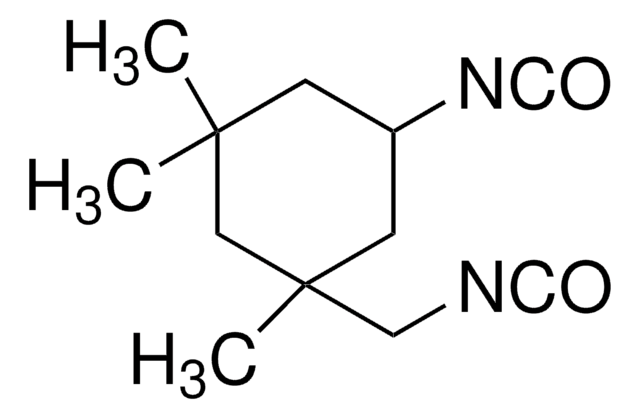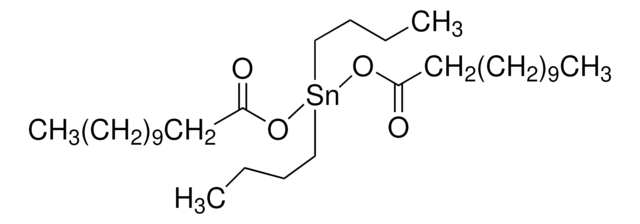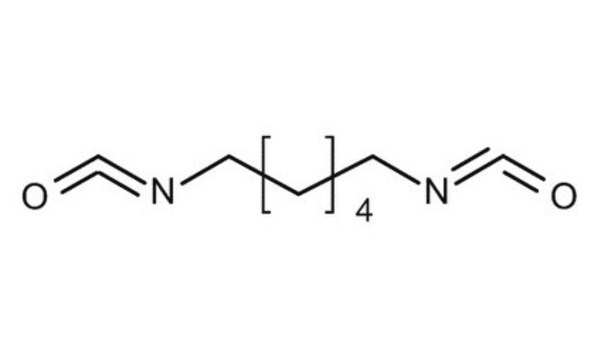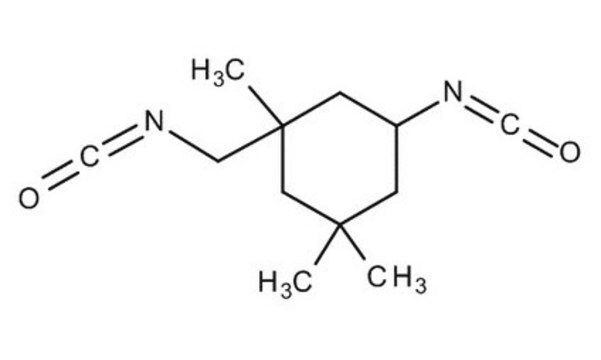52649
Hexamethylendiisocyanat
puriss., ≥99.0% (GC)
Synonym(e):
1,6-Diisocyanatohexan
About This Item
Empfohlene Produkte
Qualität
puriss.
Qualitätsniveau
Assay
≥99.0% (GC)
Brechungsindex
n20/D 1.453
bp
82-85 °C/0.1 mmHg
Dichte
1.047 g/mL at 20 °C (lit.)
1.047 g/mL at 20 °C
SMILES String
O=C=NCCCCCCN=C=O
InChI
1S/C8H12N2O2/c11-7-9-5-3-1-2-4-6-10-8-12/h1-6H2
InChIKey
RRAMGCGOFNQTLD-UHFFFAOYSA-N
Suchen Sie nach ähnlichen Produkten? Aufrufen Leitfaden zum Produktvergleich
Anwendung
Signalwort
Danger
Gefahreneinstufungen
Acute Tox. 1 Inhalation - Acute Tox. 4 Oral - Eye Dam. 1 - Resp. Sens. 1 - Skin Corr. 1C - Skin Sens. 1 - STOT SE 3
Zielorgane
Respiratory system
Lagerklassenschlüssel
6.1A - Combustible acute toxic Cat. 1 and 2 / very toxic hazardous materials
WGK
WGK 1
Flammpunkt (°F)
266.0 °F - Pensky-Martens closed cup
Flammpunkt (°C)
130 °C - Pensky-Martens closed cup
Persönliche Schutzausrüstung
Eyeshields, Faceshields, Gloves, type ABEK (EN14387) respirator filter
Analysenzertifikate (COA)
Suchen Sie nach Analysenzertifikate (COA), indem Sie die Lot-/Chargennummer des Produkts eingeben. Lot- und Chargennummern sind auf dem Produktetikett hinter den Wörtern ‘Lot’ oder ‘Batch’ (Lot oder Charge) zu finden.
Besitzen Sie dieses Produkt bereits?
In der Dokumentenbibliothek finden Sie die Dokumentation zu den Produkten, die Sie kürzlich erworben haben.
Kunden haben sich ebenfalls angesehen
Protokolle
HPLC Analysis of Isocyanates on Titan™ C18
Unser Team von Wissenschaftlern verfügt über Erfahrung in allen Forschungsbereichen einschließlich Life Science, Materialwissenschaften, chemischer Synthese, Chromatographie, Analytik und vielen mehr..
Setzen Sie sich mit dem technischen Dienst in Verbindung.













